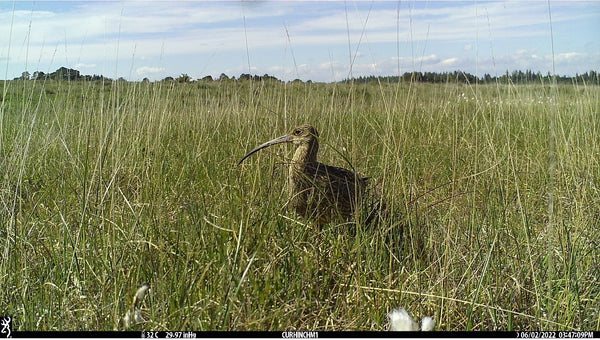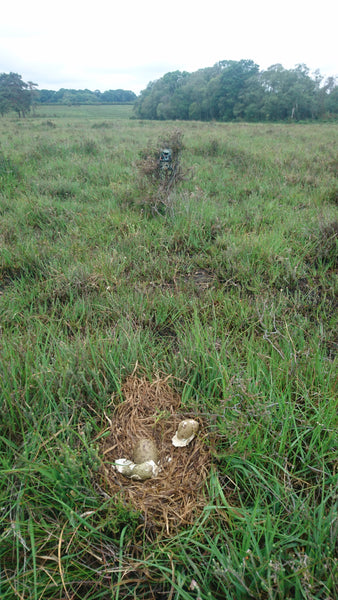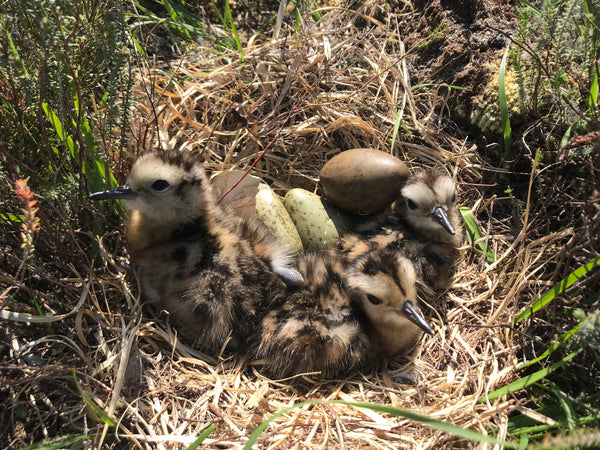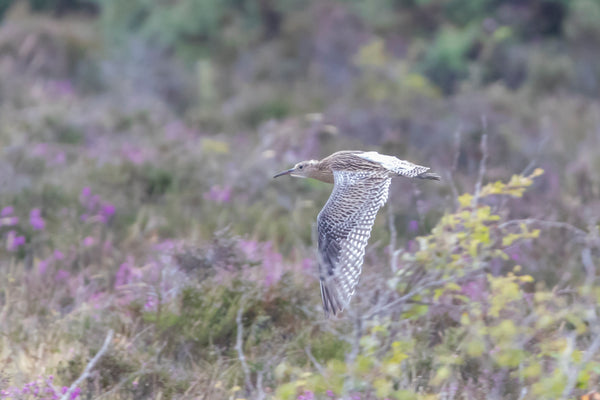
First steps in unravelling the puzzle: studying curlew chicks in the New Forest
We are really pleased to feature a fascinating blog by PhD candidate Elli Rivers who is studying breeding curlew in the New Forest, UK....
I’ve been studying the breeding population of Eurasian curlews in the New Forest, UK since 2020. Curlews have gained the dubious title of being the birds of the highest conservation concern in the UK, which holds approximately 25% of the global breeding population and therefore a great responsibility to their overall risk of extinction as a species. It has been generally agreed that the main bottleneck in improving their population stability lies within the breeding phase, as opposed to poor adult survival, and my PhD has solely focused on the ecological dynamics of these beautiful birds during the summer.

When I first started during the lockdown year in 2020, I came to the project expecting disturbance to be the predominant factor impacting on the reproductive success of curlews; much of the locally accepted wisdom surrounded the disturbance narrative, and unsurprisingly so – the New Forest is one of the most heavily visited national parks in the UK. And whilst 2020 was a pretty bizarre year in many senses, including the swing from near-deserted natural spaces to intense pressure when everyone started to use countryside they never normally visited for ‘exercise’; I found little evidence that disturbance was as big an issue as it had been anticipated to be, at least during the nesting phase. Instead, I discovered that predation was unequivocally suppressing this population. Time after time I was returning to find nests either empty, or surrounded with broken eggshells, and it was clear the immediate focus needed to be on predator identity.

So from 2021-22, working with other Game & Wildlife Conservation Trust (GWCT) scientists, we deployed Browning Trail Cameras, specifically Dark Ops Pro X trail cameras from Perdix Wildlife Supplies on as many curlew nests as we could find with great success. Despite a lot of initial concerns about whether the birds would accept the camera traps or abandon, and whether members of the public might see them and attract attention to the nests, none of my fears came true. In fact the first bird to receive a trail camera sneaked back onto the nest so quickly that I was still faffing around getting into a position to watch, and I spent a tortuous 45 minutes thinking it had likely abandoned! Only when I nervously returned the next week for a camera SD memory card change did I discover the bird had indeed gone straight back to the nest and sat down tight – so when I had turned back round it was invisible in the vegetation again.
Almost every nest fate was successfully recorded in those two years – with the exception of several unfortunate occasions when the free-roaming livestock which characterise the New Forest, saw the nest camera posts as a convenient scratching post, and duly knocked them out of position. The Browning Trail Cameras provided crystal clear photographic evidence that almost all the nests were being lost to foxes, with the occasional carrion crow. This data informed rapid responsive increase in management of these predator populations, and curlew nest success quickly improved. However, despite a brief increase in curlew chick numbers fledging at the end of the season in 2021, 2022 starkly showed me it wasn’t as simple as protecting nests if we were going to see a genuine improvement in recruitment to the population. In one area with extremely high nest survival, just a single chick fledged; and it became clear that understanding the fates of these chicks was an urgent priority for research.
So this summer (2023), I stretched my dwindling PhD budget to cover 17 PERDIX Micro VHF radio transmitter tags, the correct size to be safely deployed on newly hatched curlew chicks at less than 3% of their bodyweight, and easily attached using a simple glue mount on a muslin square to increase the contact area. The radio tags were extremely discrete due to their small size and low-profile design, and I felt comfortable that they wouldn’t negatively impact the chicks who were carrying them.

Prior to starting the radio-tracking element of my PhD study, I had been concerned that tracking effectively in the thickly vegetated areas of New Forest heathland, scrub and wet mire would be at best difficult, or at worst, impossible. Clearly it would be a test for the PERDIX Micro radio-tracking tags, and my confidence in the investment of time and money involved during the year when I was supposed to be dutifully writing up my PhD, not out doing more fieldwork! Curlew chicks will often run for cover or crouch and hide in vegetation when they feel threatened, and some predators may take chicks into dense cover to eat them. Not only this, but curlew broods can move long distances (sometimes over 1km), as can their natural predators, so issues of transmission range are key. In some habitats it was possible to take a truck and stand on the tailgate for greater elevation and a boost in signal, but in many areas of the Forest it is not permissible to drive so we were reliant on tracking on foot with handheld yagi antennas – another potential issue.
However, it rapidly became clear that my PERDIX Micro radio-tracking tags were performing excellently. As a small tracking team of three, we undertook daily fixes on each chick. The curlew chicks were generally located quickly, and hardly any days’ positions were missing from the final dataset. Aside from gaining a good understanding of the curlew chicks’ habitat usage and home ranges; these successful daily fixes gave us an opportunity to uncover any chicks which had died of other causes before they were scavenged, and their fate wrongly attributed to a predator. This granular information allowed us to gain a valuable insight into the multiple challenges facing the curlew chicks in my study population, and has opened doors to compelling future avenues for research.
The tiny radio transmitters were recovered from a variety of different habitats and circumstances – and by the end of our season, every single radio-tagged chick had been accounted for. This is unusually high for a radio-tracking study, and we attributed this success to a combination of the performance of the PERDIX Micro tags and the dedicated field hours put in by the tracking team. One tag, which was found in an active buzzard’s nest, had a signal which had been identified at a 1.15km distance – far exceeding my expectations of what might be possible. Others were found in gullies, a gorse bank, and even underwater in a wet mire.

Some of the micro tags were even successfully redeployed after recovery, thus increasing my sample size to 21 – and my confidence in their reliability.
The radio tags were also used as a method of locating and catching bigger pre-fledging chicks, who then received a set of colour rings so they could be subsequently identified should they return to breed in the future. Although the focus of my study was the pre-fledging survival of these chicks, in a broader sense these colour rings can help contribute to building a clearer picture of their true recruitment rates.
All in all, I was delighted with the progress we made this summer. I’m hoping we can continue this work in the coming years, and contribute to understand the challenges which are facing these chicks as they try to survive in our lowlands.

Image credits: Jack Sheppard, Elli Rivers & Mike Short.
